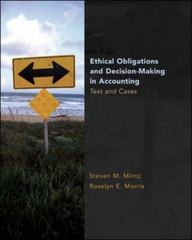Question
Many auditors have begun to turn their sights to their next group of audits: clients with 2020 fiscal year ends. The World Health Organization declared
Many auditors have begun to turn their sights to their next group of audits: clients with 2020 fiscal year ends. The World Health Organization declared a public health emergency on Jan. 30, 2020, meaning many of these clients will have been affected by the COVID-19 pandemic during the period under audit.
When states issued stay-at-home orders in March and April, many entities were presented with a new reality. As they shifted from the office environment to remote working, and as financial reporting processes moved from in-person to virtual, the risk of breakdowns in internal control was heightened.
Auditors are required to evaluate the design and implementation of controls relevant to the audit for each client. To determine whether a control is relevant to the audit, auditors should exercise their professional judgment. Auditors should consider what could go wrong from a financial reporting perspective and whether certain controls can mitigate those risks.
(Adapted from journalofaccountancy.com, 6 June 2020)
Required
- state the purpose of the essay, i.e. identify that the report is a discussion on the objectives and importance of internal controls in organisations.
- Provides overview of current issues pertaining to internal controls and its major components. These include the control environment, entity's risk assessment process, information system (including the related business processes, control activities relevant to the audit, relevant to financial reporting, and communication) and monitoring of controls.
- Analyse the benefits of implementing robust internal controls in organisations.
- Discuss the potential limitations of internal controls, such as management override, lack of monitoring and supervision due to staff turnover. (Quote relevant case studies and examples to support discursive arguments.)
- Explain reasons why auditors need to perform test of controls and evaluate on how the auditor's evaluation of the design and implementation of relevant controls affects the rest of the audit.
- Provide an informed conclusion which is justified by supporting arguments inyour report.
Step by Step Solution
There are 3 Steps involved in it
Step: 1

Get Instant Access to Expert-Tailored Solutions
See step-by-step solutions with expert insights and AI powered tools for academic success
Step: 2

Step: 3

Ace Your Homework with AI
Get the answers you need in no time with our AI-driven, step-by-step assistance
Get Started


